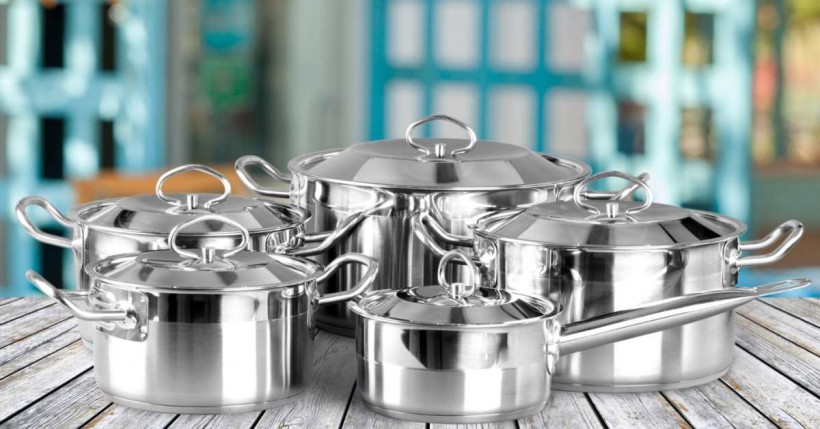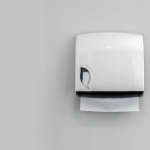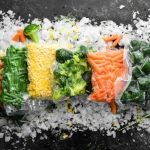6 Ways How To Select Non-Toxic Cookware
Warning: Undefined variable $post in /home/dietofli/public_html/wp-content/plugins/code-snippets/php/snippet-ops.php(584) : eval()'d code on line 3
Warning: Attempt to read property "ID" on null in /home/dietofli/public_html/wp-content/plugins/code-snippets/php/snippet-ops.php(584) : eval()'d code on line 3
The estimated reading time is 13 minutes
Warning: Undefined variable $post in /home/dietofli/public_html/wp-content/plugins/oxygen/component-framework/components/classes/code-block.class.php(115) : eval()'d code on line 3
Warning: Attempt to read property "ID" on null in /home/dietofli/public_html/wp-content/plugins/oxygen/component-framework/components/classes/code-block.class.php(115) : eval()'d code on line 3

If you’re someone who pays attention to the food you choose to eat, then you’ve probably read hundreds of articles on what healthy foods you should include in your diet and what unhealthy foods you should avoid. But, has it ever occurred to you what cookware you use to prepare your food? Are you using healthy and safe cookware? We must warn you – the cookware that you are using to cook food every day may be quite unhealthy – in fact, it may even be toxic.
We live in an age in which we want to make everything convenient and easy, including cooking. We don’t want food to get stuck on our pans and pots while cooking, so instead of oiling them, we choose to buy non-stick cookware. Unfortunately, not many people are aware that the majority of brands of non-stick cookware contain perfluorooctanoic acid (PFOA), a chemical that is used to make non-stick coatings and which has been associated with several health issues, including ulcerative colitis, thyroid disease, kidney disease, testicular cancer, and kidney cancer. (1,2,3)
So, in this article, we’re going to discuss what cookware you should avoid using, what factors you should take into consideration when buying healthy cookware, and what the best types of non-toxic cookware are.
What Cookware Should You Avoid?
When buying cookware, avoid the following types since they release toxic chemicals.
1. Non-stick Teflon-Coated Cookware
When you use non-stick Teflon-coated pans, you don’t need to melt butter on them prior to cooking, which is very convenient. However, just because it’s non-stick, it doesn’t mean it’s safe and healthy.
When you heat non-stick pans and pots, most of them release toxic fumes, which is why non-stick cookware comes with a warning that customers should avoid heating those products to a high temperature. Nevertheless, it’s been shown by the Environmental Working Group that non-stick cookware can release toxins in only a couple of minutes on a stove. And Teflon, being one of the most widely used non-stick coatings, has been reported to be a major cause of death among pet birds due to the toxic fumes it emits when overheated. (4)
Additionally, you can often see claims, such as “PFOA-free,” “PTFE-free,” written on the labels on most non-stick cookware, but you can never know for sure whether these claims can be trusted or not.
So, either avoid using Teflon-coated cookware or other non-stick cookware or if you need to cook with such products, make sure that you use a wooden spoon and that you don’t heat them to a high temperature in order to be less exposed to dangerous chemicals.
2. Copper Cookware
If the coating of copper cookware scratches off, the metal can get transferred to your food. You can also damage the coating by scrubbing. Although copper is present in the brain and liver, too much copper can adversely affect your health and lead to neurodegenerative disease. (5,6)
Besides conducting heat well, copper cookware is expensive and requires maintenance as well. If you don’t polish it, it can easily lose its shiny appearance.
When buying copper cookware, make sure it is lined with stainless steel as this will prevent the metal from leaching into your food.
3. Plastic Containers And Utensils
Plastic utensils and containers are very convenient to use, plus there are countless options available on the market these days. But, if you’re a fan of such products, we advise you to replace them with cookware made of silicone, wood, stainless steel, and bamboo, as when plastic heats, it can melt and harmful chemicals can leach into your food.
4. Aluminum Cookware
One study has indicated that cooking food in aluminium cookware can lead to migration of the metal to the food, particularly when you are cooking acidic foods. (7)
If too much of this metal gets into your body, it can enter your bones, liver, and brain and cause damage. Moreover, aluminium exposure has been reported to considerably contribute to Alzheimer’s disease. (8,9)
Cookware that is moderately safe is available on the market today as well.
These products include:
1. Carbon Steel Cookware
Carbon steel cookware is easy to use and store. It also doesn’t weigh a lot and it’s resistant to high temperatures.
However, there are a few disadvantages of using carbon steel cookware. For instance, you need to season it with an oil coating so that it doesn’t rust and that food doesn’t stick on it. And acidic foods can cause it to degrade.
Additionally, due to oxidation, carbon steel cookware creates a brownish film which is known as patina and it may give food a slightly metallic taste. And it can also release iron into your food.
Three other disadvantages of using carbon steel cookware are that it may take you longer to heat it up, it doesn’t conduct heat well, and you should not place it in the dishwasher.
2. Glass Cookware
The great thing about glass cookware is that it doesn’t leach chemicals into your food. It’s also relatively cheap and it won’t damage if you put it in the dishwasher or microwave or if you use it on an electric stove.
However, the downside associated with glass cookware is that when it’s hot, it shouldn’t be put on a cold surface because it can break. In addition, compared with other cookware, glass cookware is more fragile and it weighs more as well. Moreover, food can stick on it and you can’t use it on an induction stove.
3. Cast Iron Cookware
The good thing about cast iron cookware is that it conducts heat well, thereby heating your food thoroughly. It can be used for a long time as well. However, it does require maintenance. For example, you need to oil it to prevent food from sticking on it as well as prevent it from rusting. Additionally, you should not wash it with dish detergent or put it in the dishwasher. And it should be dried thoroughly after you use it.
You need to be careful about how often you use cast iron cookware since some of the metal leaches into your food and too much of it may be toxic. If you have iron deficiency, using such products may be a simple way to include iron in your diet.
In order to avoid buying toxic cookware, you need to be able to understand non-toxic and non-stick cookware terms:
-
PFAS (Per-And Polyfluoroalkyl Substances)
PFAS are a group of chemicals which are used during manufacturing Teflon coatings which resist water, oil, heat, and stains and it includes Gen X, PFOS, and PFOA.
These chemicals are associated with concerns for environmental contamination and health.
-
Gen X
Gen X is a type of PFAS chemical which is used to manufacture Teflon nonstick coatings.
According to the U.S. Environmental Protection Agency (EPA), you can be exposed to this chemical by inhaling air, drinking water as well as eating food that was wrapped in products containing PFAS. (10)
-
PFOA (Perfluorooctanoic Acid)
PFOA is a chemical which is produced and used during making products and coatings which are resistant to grease, heat, water, stains, and oil.
After it was used in the U.S. for decades, PFOA was phased out due to concerns for public health.
-
PTFE (Polytetrafluoroethylene)
PTFE, also known as Teflon, is a synthetic polymer which is widely known for its non-stick properties and resistance to high temperatures. Teflon cookware is usually safe. However, if you overheat a Teflon pan, it can cause off-gassing which may lead to a health condition known as polymer fume fever, which has symptoms similar to those of flu. (11)
When non-stick coatings get damaged, metals, such as lead, copper, or aluminium, may make their way into your food.
So when buying cookware, choose products that have PFAS-free non-stick coatings.
What Is The Healthiest Cookware For You?
1. Ceramic Cookware
Ceramic cookware, including ceramic-coated cookware, is great for slow and low cooking. Cooking in this type of cookware is safe since there’s no risk that chemicals may be released into your food. Since ceramic cookware is non-reactive, you can safely cook acidic foods in it. You can also use it for baking and on the stove.
Ceramic-coated cookware usually contains PFOA, PFAS, cadmium, and lead, but when buying such products, ensure that they don’t contain these chemicals and metals.
One disadvantage of ceramic cookware is that it doesn’t work on induction stoves. And another disadvantage is that it can easily break if you drop it onto a solid surface.
2. Stainless Steel Cookware
Since it is not non-stick, stainless steel cookware may not be the best type of cookware for frying, but it’s great for cooking grains, legumes, and soup as well as steaming vegetables. To prevent sticking, you only need to oil it or add more water when cooking. You can also put it in the dishwasher without worrying that it may get damaged.
Stainless steel cookware of high quality can be costly, but it lasts for a long time.
3. Enamel-Coated Cast Iron Cookware
This type of cookware is porcelain-coated which is why it’s not high maintenance and it’s rust-resistant.
Enamel-coated cast iron cookware is one of the safest non-stick cookware and it doesn’t require seasoning prior to using it. Additionally, it doesn’t release iron or chemicals into your food. It’s non-reactive, which means that you can cook acidic foods in it without worry, and it can be used on induction cooktops. High-quality enamel-coated cast iron cookware can last for a long time.
Compared with other cast iron cookware, this type of cookware comes in different colors and can be placed in the dishwasher. You can also clean it with dish soap.
4. Titanium Cookware
Compared with other types of cookware, titanium cookware is generally cheaper. It can also last for a long time and it’s safe and healthy cookware since it doesn’t release chemicals into your food. In addition, it is scratch-resistant and it doesn’t rust.
One disadvantage of titanium cookware is that it’s not great for conducting heat and it takes longer to warm up. However, this is not the case with cookware that has an aluminium core and a titanium coating.
Additionally, cookware made of pure titanium isn’t non-stick and not all titanium pans and pots can be used on induction cooktops.
6 Important Things To Take Into Consideration When Choosing Healthy And Safe Cookware
1. What Material Is The Cookware Made Of?
One of the first crucial things to consider when choosing healthy and non-toxic cookware is the material it’s made of. There are different materials, such as cast iron, aluminium cookware, stainless steel, copper cookware, and ceramic cookware.
As you can notice, the majority of the materials used to manufacture cookware are some type of metal. These metals can get released into the food you cook. Additionally, when the pot or pan is heated, the metals and other chemicals can get released into the air.
Some metals, such as copper and aluminium, leach more than others, such as stainless steel and cast iron.
Moreover, since metal heats and cools fast, you need to use high heat when cooking in order to make sure that the food is cooked evenly and thoroughly. However, there’s one disadvantage of cooking this way and that is that important nutrients can get lost.
When the metals of your cookware get released into your food and you eat it, those metals begin to gradually build up in your body. Your body will try to eliminate them from the system, which may cause your organs to wear out with time. If your body doesn’t eliminate the metals from your system, they can accumulate in your body over time and cause health issues. We already mentioned that aluminium can be particularly harmful to the body and it’s been associated with Alzheimer’s disease. (12)
2. Are There Any Chemicals In The Material?
In the process of manufacturing cookware, manufacturers use heavy machinery and they can treat the material that the pots and pans are made of with chemicals. For instance, some types of cookware incorporate cadmium and lead into their production and these too can be quite harmful to the body.
It’s worth mentioning that when some cookware is made of pure material without coating, this doesn’t mean it’s non-toxic because sometimes during the manufacturing process, toxins can be added to the cookware which can leach into your food.
3. Does The Cookware Have A Coating?
Another important thing to consider when choosing healthy and safe cookware is to make sure that it does not have a coating. A lot of pans and pots have a non-stick surface included which is made of Teflon, and we already said that when overheated, this chemical can release toxic fumes into your food and into the air, which can lead to both environmental and health problems. Although PFOA is no longer included in the production of cookware, it’s been substituted for other chemicals in the manufacturing of non-stick pots and pans which can be as hazardous as PFOA.
Additionally, you can find ceramic-coated cookware, but the coating may be made of synthetic non-stick material, and not ceramic. This also presents concerns for health as such products can release chemicals into your food.
4. How Long Does The Cookware Last?
When you buy pots and pans, regardless of their price, you want them to last for a long time. How durable a pan or pot will depend on how much maintenance it requires and whether it’s scratch-resistant. Typically, non-stick cookware lasts for a few years, whereas stainless steel and cast iron cookware may last for a long time.
5. How Much Does The Cookware Cost?
As we already said, when investing in cookware, you want it to be durable. And those pans and pots that can last for decades are typically pricey. However, if you can’t afford to buy expensive cookware, don’t worry as there are various options available on the market today at a reasonable price.
6. What Are Your Cooking Needs?
How often do you cook? Do you need to buy a whole set or can you just buy a few high-quality pieces? What do you need pots and pans for? Do you need them for baking, steaming, or boiling? These are all questions you need to consider when choosing safe and healthy cookware.
Conclusion
The cookware you use to prepare food equally matters as the food you eat.
When choosing cookware, you should avoid the following types of cookware: Non-stick Teflon-coated cookware, copper cookware, plastic utensils and containers, and aluminium cookware. All of these types of cookware can release harmful chemicals and metals into your food.
Cookware that is moderately safe to use includes Carbon steel cookware, glass cookware, and cast iron cookware.
When buying cookware, ensure it’s PTFE- and Gen X – free.
Ceramic cookware, stainless steel cookware, enamel-coated cast iron cookware, and titanium cookware are the least toxic.
One of the safest non-toxic and non-stick pans are enamel-coated cast iron and stainless steel.
When choosing cookware, make sure you consider the following 6 things:
- What material the cookware is made of
- Whether the material contains any chemicals
- Whether the cookware has a coating
- How much does the cookware cost?
- What your cooking needs are?














